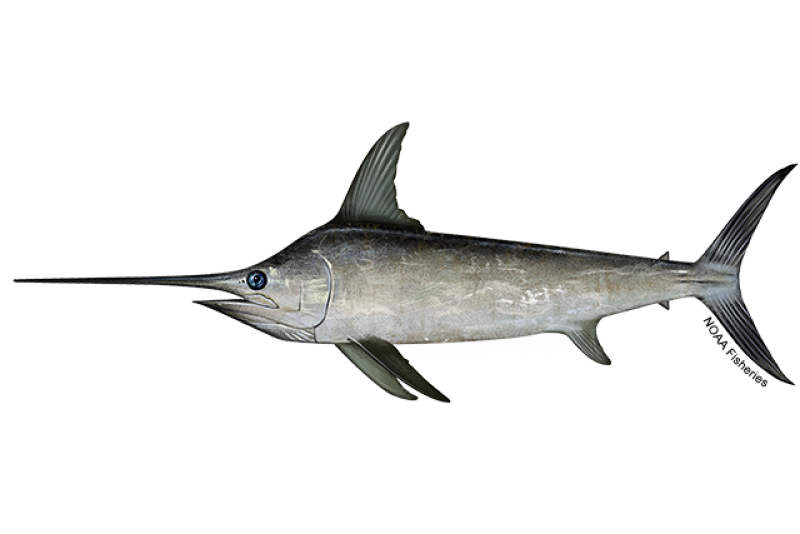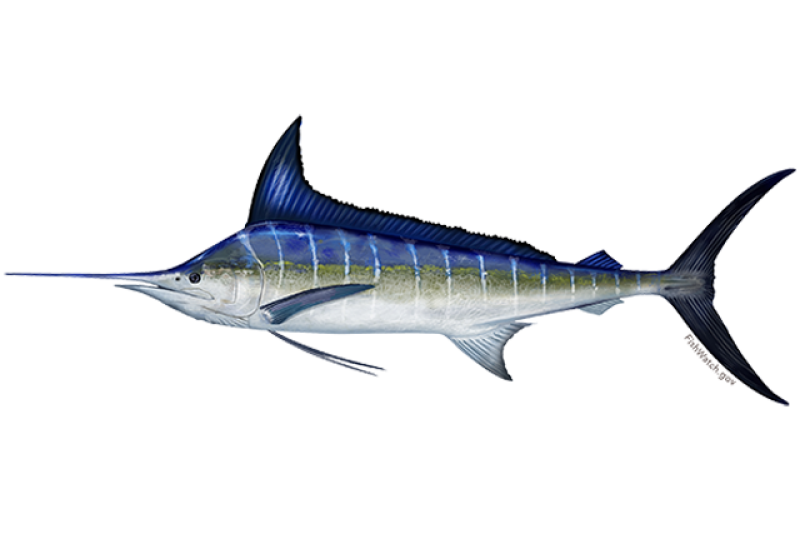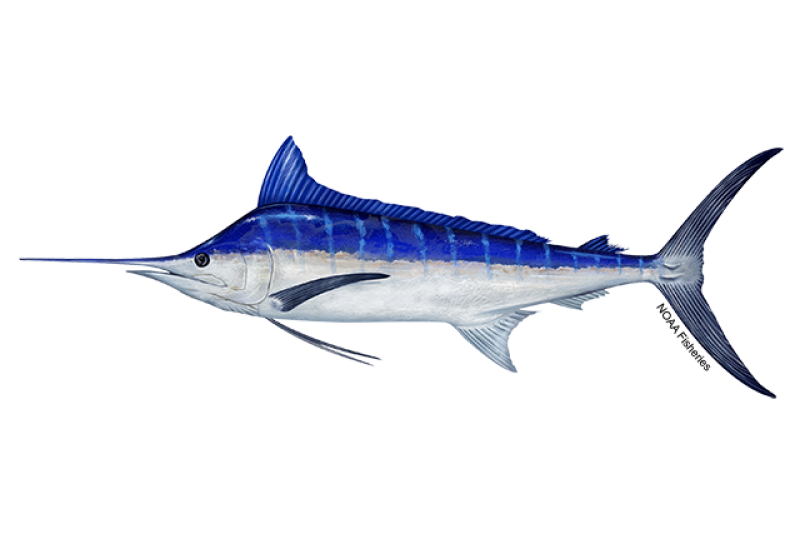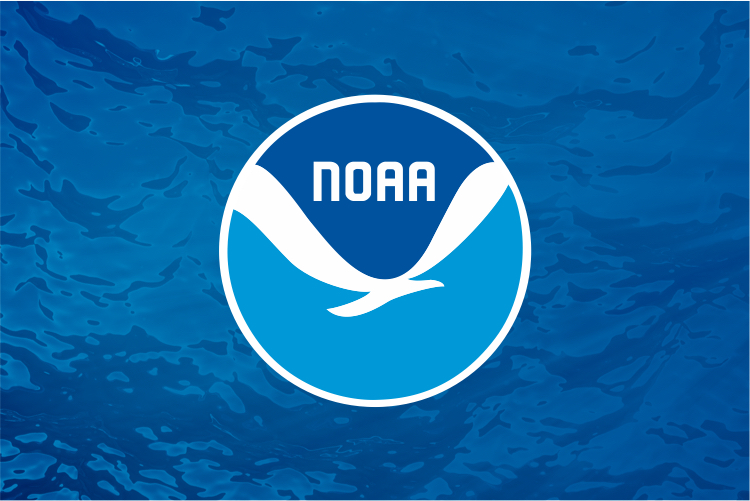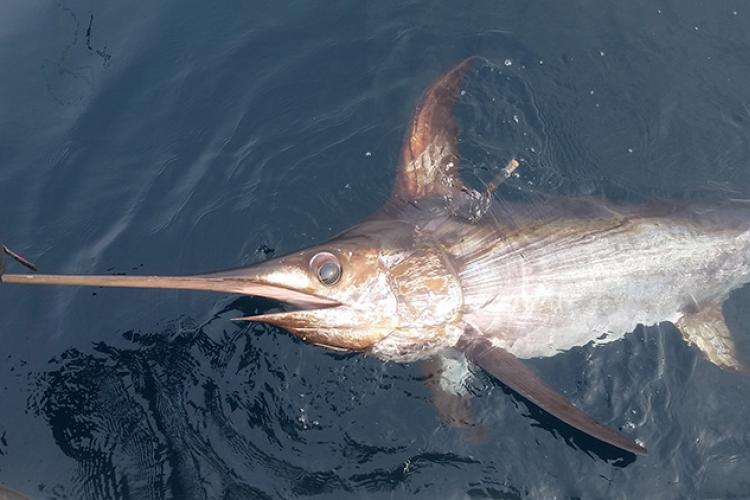 Researchers tagging a swordfish. Credit: Pfleger Institute of Environmental Research
Researchers tagging a swordfish. Credit: Pfleger Institute of Environmental Research
Researchers tagging a swordfish. Credit: Pfleger Institute of Environmental Research
About the Species
 Researchers tagging a swordfish. Credit: Pfleger Institute of Environmental Research
Researchers tagging a swordfish. Credit: Pfleger Institute of Environmental Research
Researchers tagging a swordfish. Credit: Pfleger Institute of Environmental Research
U.S. wild-caught North Pacific swordfish is a smart seafood choice because it is sustainably managed and responsibly harvested under U.S. regulations.

Population
The stocks are not overfished.

Fishing Rate
The Western and Central North Pacific stock is not subject to overfishing. Reduced to end overfishing for the Eastern Pacific stock.

Habitat Impacts
Fishing gear used to catch Pacific swordfish rarely contacts the seafloor so habitat impacts are minimal.

Bycatch
Regulations are in place to minimize bycatch.
Population Status
- There are two stocks of North Pacific swordfish: the Eastern Pacific Ocean stock and the Western and Central North Pacific Ocean stock. According to the most recent stock assessments:
- The Eastern Pacific Ocean stock is not overfished but is subject to overfishing (2014 stock assessment). Summary stock assessment information can be found on Stock SMART.
- The Western and Central North Pacific Ocean stock is not overfished and is not subject to overfishing (2018 stock assessment). Summary stock assessment information can be found on Stock SMART.
Appearance
- Swordfish have a long, flattened bill that looks like a sword, as their name implies.
- They have a stout, rounded body and large eyes.
- Their first dorsal fin is tall and crescent-shaped. The second is much smaller.
- Their anal fins are similar in shape to the dorsal fins but smaller.
- They have a broad, crescent-shaped tail.
- Their color is darkest on top, generally black or brown.
- Adult swordfish have no teeth or scales.
Biology
- Swordfish are one of the fastest and largest predators in the ocean. Their streamlined body allows them to swim at high speeds, up to 50 mph.
- They grow rapidly, reaching a maximum length of 14 feet and almost 1,200 pounds (although the average size caught in the fishery is 50–200 pounds).
- They are able to reproduce when they reach 5 to 6 years old.
- Swordfish spawn numerous times throughout the year near the surface of warm tropical and sub-tropical waters.
- In cooler waters, they spawn several times during the spring and summer.
- Swordfish are productive, and their eggs are fertilized externally and float at the sea surface where they incubate for about 2 1/2 days. Swordfish live for about 9 years.
- Swordfish feed on a variety of fish and invertebrates such as squid.
- They capture their prey by slashing their bills back and forth, stunning or injuring the prey in the process.
- They have developed unique characteristics, such as special eye muscles and a heat exchange system that allow them to swim in deep cold water in search of prey.
- Swordfish feed at the top of the food chain and are rarely preyed upon by other animals, but juvenile swordfish are sometimes eaten by sharks and larger predatory fish.
Where They Live
Range
- Swordfish are found around the world in tropical, temperate, and sometimes cold waters of the Atlantic, Indian, and Pacific Oceans, including the waters around the U.S. Pacific Islands and off the U.S. West Coast.
Habitat
- Swordfish live in surface water to mid-water but feed throughout the water column.
- Scientists know little about the migration of Pacific swordfish, but tagging data suggest swordfish move eastward from the central Pacific, north of Hawaii, toward the U.S. West Coast.
Fishery Management
- NOAA Fisheries and the Pacific Fishery Management Council manage the North Pacific swordfish fishery on the West Coast.
- Managed under the Fishery Management Plan for U.S. West Coast Fisheries for Highly Migratory Species:
- Fishermen are required to have permits and to record catch in logbooks.
- Gear restrictions and operational requirements are in place to minimize bycatch.
- Longline and drift gillnet fishing boats are required to carry observers when requested.
- Longline fishing is prohibited within 200 miles of the U.S. West Coast.
- Longline fishing regulations vary by gear type (shallow-set, deep-set, etc.) and fishing area (eastern Pacific, high seas, etc.).
- Drift gillnets are allowed in federal waters but not in state waters.
- Time and areas closures are in place to protect leatherback and loggerhead sea turtles.
- Training in safe handling and release techniques for protected species is required and all longline vessels must carry and use specific equipment for handling and releasing these animals.
- NOAA Fisheries is issuing exempted fishing permits on a case-by-case, as a means to increase the economic viability of the West Coast swordfish fishery while minimizing bycatch and incidental catch of protected and unmarketable species.
- EFPs have been issued for standard and linked deep-set buoy gear, night-set buoy gear, and longline gear (for use within 200 miles of the U.S. West Coast).
- NOAA Fisheries and Western Pacific Fishery Management Council manage the North Pacific swordfish fishery in the Pacific Islands.
- Managed under the Fishery Ecosystem Plan for the Pelagic Fisheries of the Western Pacific:
- Fishermen are required to have permits and to record catch in logbooks.
- A limit on the number of permits for Hawaii and American Samoa longline fisheries controls participation in the fishery.
- Gear restrictions and operational requirements to minimize bycatch:
- Circle hooks and finfish bait reduce the number of sea turtles caught and cause less injury to sea turtles that are hooked.
- Sea turtle handling and release protocols that minimize further injury and increase the chance of survival.
- Annual limits on the number of leatherback and loggerhead sea turtles that can be caught in the Hawaii longline fishery. If either limit is reached, the fishery is closed for the rest of the year.
- Gear restrictions to minimize seabird interactions and injury to seabirds.
- Longline fishing is prohibited in some areas to protect endangered Hawaiian monk seals and to reduce conflicts between fishermen.
- These areas are enforced through the NOAA Fisheries vessel monitoring system program (longline boats must be equipped with a satellite transponder that provides real-time position updates and tracks vessel movements).
- Hawaii-based longline vessels must carry onboard observers when requested by NOAA Fisheries, in part to record interactions with sea turtles, seabirds, and marine mammals.
- Annual training in safe handling and release techniques for protected species is required, and all vessels must carry and use specific equipment for handling and releasing these animals.
- Management of highly migratory species, like Pacific swordfish, is complicated because the species migrate thousands of miles across international boundaries and are fished by many nations.
- Effective conservation and management of this resource requires international cooperation as well as strong domestic management.
- Two organizations, the Inter-American Tropical Tuna Commission (IATTC) and the Western and Central Pacific Fisheries Commission (WCPFC), manage this fishery internationally. Historically, the International Scientific Committee for Tuna and Tuna-like Species in the North Pacific Ocean (ISC) conducted stock assessments to determine the status of both the Western and Central North Pacific Ocean stock and the Eastern Pacific Ocean stock of swordfish. The IATTC conducted the most recent stock assessment for the Western and Central North Pacific Ocean stock. Working with the U.S. Department of State, NOAA Fisheries domestically implements the IATTC and WCPFC conservation and management measures.
Harvest
- Commercial fishery:
- In 2022, commercial landings of swordfish 2.6 million pounds and were valued at $12.3 million, according to the NOAA Fisheries commercial fishing landings database.
- The majority of North Pacific swordfish landed in California is landed by Hawaii-based vessels.
- Hawaii-based longliners accounted for the majority of U.S. catch of North Pacific swordfish.
- Gear types, habitat impacts, and bycatch:
- Commercial fishermen use longline gear to harvest swordfish in federal waters off of Hawaii and on the high seas.
- In federal waters off the West Coast, commercial fishermen harvest swordfish using drift gillnets and harpoons, and using deep-set buoy gear authorized under exempted fishing permits in recent years.
- Fishing gear used to catch swordfish rarely contacts the seafloor so habitat impacts are minimal.
- Longlines and gillnets can incidentally catch sea turtles, marine mammals, seabirds, sharks, and other finfish species. Gear restrictions and operational requirements are in place to minimize bycatch.
- U.S. longline and drift gillnet vessels operate under regulations to minimize impacts on other species.
- Recreational fishery:
- Off the U.S. West Coast, recreational fishermen fish for swordfish with rod-and-reel gear. They are prohibited from selling their catch.
- Fishermen must have a fishing license to catch and land swordfish and are allowed to keep two swordfish per day.
- Commercial passenger fishing vessels must have a permit and keep a monthly log of their fishing activity.
- There are no federal regulations for recreational fishing off Hawaii and U.S. Pacific Island territories, but local rules may apply.
Scientific Classification
- Swordfish are found around the world in tropical, temperate, and sometimes cold waters of the Atlantic, Indian, and Pacific Oceans, including the waters around the U.S. Pacific Islands and off the U.S. West Coast.
- Swordfish live in surface water to mid-water but feed throughout the water column.
- Scientists know little about the migration of Pacific swordfish, but tagging data suggest swordfish move eastward from the central Pacific, north of Hawaii, toward the U.S. West Coast.
Fishery Management
- NOAA Fisheries and the Pacific Fishery Management Council manage the North Pacific swordfish fishery on the West Coast.
- Managed under the Fishery Management Plan for U.S. West Coast Fisheries for Highly Migratory Species:
- Fishermen are required to have permits and to record catch in logbooks.
- Gear restrictions and operational requirements are in place to minimize bycatch.
- Longline and drift gillnet fishing boats are required to carry observers when requested.
- Longline fishing is prohibited within 200 miles of the U.S. West Coast.
- Longline fishing regulations vary by gear type (shallow-set, deep-set, etc.) and fishing area (eastern Pacific, high seas, etc.).
- Drift gillnets are allowed in federal waters but not in state waters.
- Time and areas closures are in place to protect leatherback and loggerhead sea turtles.
- Training in safe handling and release techniques for protected species is required and all longline vessels must carry and use specific equipment for handling and releasing these animals.
- NOAA Fisheries is issuing exempted fishing permits on a case-by-case, as a means to increase the economic viability of the West Coast swordfish fishery while minimizing bycatch and incidental catch of protected and unmarketable species.
- EFPs have been issued for standard and linked deep-set buoy gear, night-set buoy gear, and longline gear (for use within 200 miles of the U.S. West Coast).
- NOAA Fisheries and Western Pacific Fishery Management Council manage the North Pacific swordfish fishery in the Pacific Islands.
- Managed under the Fishery Ecosystem Plan for the Pelagic Fisheries of the Western Pacific:
- Fishermen are required to have permits and to record catch in logbooks.
- A limit on the number of permits for Hawaii and American Samoa longline fisheries controls participation in the fishery.
- Gear restrictions and operational requirements to minimize bycatch:
- Circle hooks and finfish bait reduce the number of sea turtles caught and cause less injury to sea turtles that are hooked.
- Sea turtle handling and release protocols that minimize further injury and increase the chance of survival.
- Annual limits on the number of leatherback and loggerhead sea turtles that can be caught in the Hawaii longline fishery. If either limit is reached, the fishery is closed for the rest of the year.
- Gear restrictions to minimize seabird interactions and injury to seabirds.
- Longline fishing is prohibited in some areas to protect endangered Hawaiian monk seals and to reduce conflicts between fishermen.
- These areas are enforced through the NOAA Fisheries vessel monitoring system program (longline boats must be equipped with a satellite transponder that provides real-time position updates and tracks vessel movements).
- Hawaii-based longline vessels must carry onboard observers when requested by NOAA Fisheries, in part to record interactions with sea turtles, seabirds, and marine mammals.
- Annual training in safe handling and release techniques for protected species is required, and all vessels must carry and use specific equipment for handling and releasing these animals.
- Management of highly migratory species, like Pacific swordfish, is complicated because the species migrate thousands of miles across international boundaries and are fished by many nations.
- Effective conservation and management of this resource requires international cooperation as well as strong domestic management.
- Two organizations, the Inter-American Tropical Tuna Commission (IATTC) and the Western and Central Pacific Fisheries Commission (WCPFC), manage this fishery internationally. Historically, the International Scientific Committee for Tuna and Tuna-like Species in the North Pacific Ocean (ISC) conducted stock assessments to determine the status of both the Western and Central North Pacific Ocean stock and the Eastern Pacific Ocean stock of swordfish. The IATTC conducted the most recent stock assessment for the Western and Central North Pacific Ocean stock. Working with the U.S. Department of State, NOAA Fisheries domestically implements the IATTC and WCPFC conservation and management measures.
Harvest
- Commercial fishery:
- In 2022, commercial landings of swordfish 2.6 million pounds and were valued at $12.3 million, according to the NOAA Fisheries commercial fishing landings database.
- The majority of North Pacific swordfish landed in California is landed by Hawaii-based vessels.
- Hawaii-based longliners accounted for the majority of U.S. catch of North Pacific swordfish.
- Gear types, habitat impacts, and bycatch:
- Commercial fishermen use longline gear to harvest swordfish in federal waters off of Hawaii and on the high seas.
- In federal waters off the West Coast, commercial fishermen harvest swordfish using drift gillnets and harpoons, and using deep-set buoy gear authorized under exempted fishing permits in recent years.
- Fishing gear used to catch swordfish rarely contacts the seafloor so habitat impacts are minimal.
- Longlines and gillnets can incidentally catch sea turtles, marine mammals, seabirds, sharks, and other finfish species. Gear restrictions and operational requirements are in place to minimize bycatch.
- U.S. longline and drift gillnet vessels operate under regulations to minimize impacts on other species.
- Recreational fishery:
- Off the U.S. West Coast, recreational fishermen fish for swordfish with rod-and-reel gear. They are prohibited from selling their catch.
- Fishermen must have a fishing license to catch and land swordfish and are allowed to keep two swordfish per day.
- Commercial passenger fishing vessels must have a permit and keep a monthly log of their fishing activity.
- There are no federal regulations for recreational fishing off Hawaii and U.S. Pacific Island territories, but local rules may apply.
Scientific Classification
| Kingdom | Animalia | Phylum | Chordata | Class | Actinopterygii | Order | Istiophoriformes | Family | Xiphiidae | Genus | Xiphias | Species | gladius |
|---|
Last updated by NOAA Fisheries on 02/21/2024
Featured News
 The 20th Annual Western and Central Pacific Fisheries Commission meeting at the Te Are Kariori (National Auditorium) in
Rarotonga, Cook Islands. Credit: NOAA Fisheries.
The 20th Annual Western and Central Pacific Fisheries Commission meeting at the Te Are Kariori (National Auditorium) in
Rarotonga, Cook Islands. Credit: NOAA Fisheries.
 A bidder checks the quality of tuna at the Honolulu Fish Auction. Credit: NOAA Fisheries
A bidder checks the quality of tuna at the Honolulu Fish Auction. Credit: NOAA Fisheries
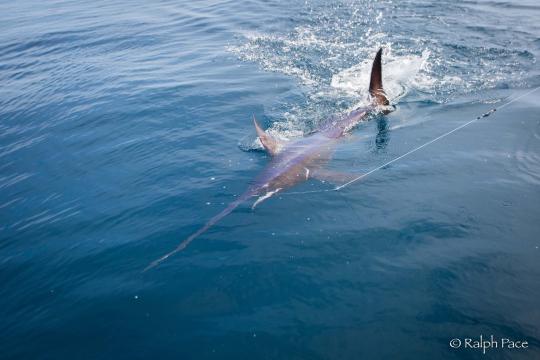 North Pacific Swordfish. Credit: Ralph Pace
North Pacific Swordfish. Credit: Ralph Pace
 Tuna swim in sunlight. Credit: iStock.
Tuna swim in sunlight. Credit: iStock.
Seafood Facts

Is North Pacific Swordfish Sustainable?
U.S. wild-caught North Pacific swordfish is a smart seafood choice because it is sustainably managed and responsibly harvested under U.S. regulations.
Availability
Year-round.
Source
U.S. wild-caught from Hawaii, California, U.S. Pacific Island territories, and the high seas.
Taste
Moist, flavorful, and slightly sweet.
Texture
Firm, with a moderately high oil content.
Color
When raw, the flesh varies from white and ivory to pink and orange. When cooked, swordfish meat turns beige.
Health Benefits
Swordfish is an excellent source of selenium, niacin, vitamin B12, and zinc. More information on health and seafood.
Nutrition Facts
Servings: 1; Serving Weight: 100 g; Calories: 121 ; Protein: 19.8 g; Total Fat: 4.01 g; Total Saturated Fatty Acids: 1.097 g; Carbohydrate: 0 g; Total Sugars: 0 g; Total Dietary Fiber: 0 g; Cholesterol: 39 mg; Selenium: 48.1 mcg; Sodium: 90 mgMore Information
Last updated by NOAA Fisheries on 02/21/2024
Seafood News
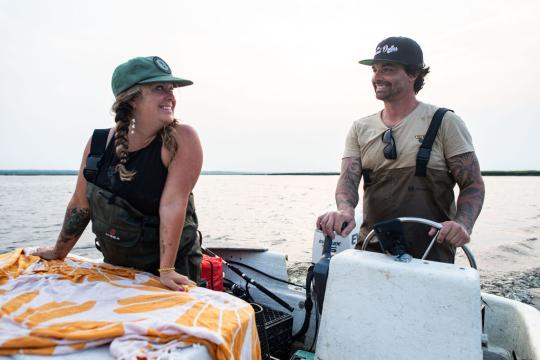 Photo credit: Christine Hochkeppel, christinehochkeppel.com
Photo credit: Christine Hochkeppel, christinehochkeppel.com
 Port of Dutch Harbor and the village of Unalaska in the Aleutian Chain on the edge of the southeastern Bering Sea. Dutch Harbor the largest fishing port by volume in the U.S. Credit: NOAA Fisheries/Paul Hillman.
Port of Dutch Harbor and the village of Unalaska in the Aleutian Chain on the edge of the southeastern Bering Sea. Dutch Harbor the largest fishing port by volume in the U.S. Credit: NOAA Fisheries/Paul Hillman.
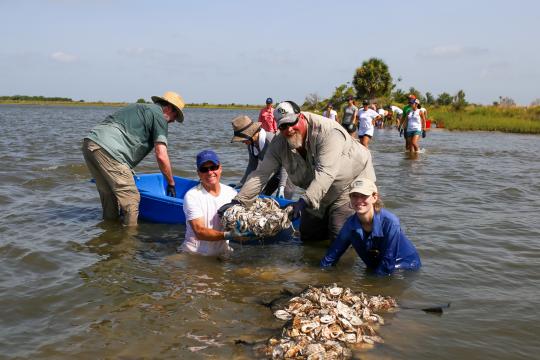 Volunteers build an oyster reef from recycled oyster shells (Photo: Galveston Bay Foundation)
Volunteers build an oyster reef from recycled oyster shells (Photo: Galveston Bay Foundation)
Documents
2017 Billfish Newsletter
The annual Billfish Newsletter communicates the results of cooperative efforts between fishery…
2016 Billfish Newsletter
The annual Billfish Newsletter communicates the results of cooperative efforts between fishery…
2020 Highly Migratory Species Annual Report
This report focuses on work of SWFSC scientists on highly migratory fish species (HMS) and their…
Data & Maps
American Samoa Longline Logbook Reports 2022
Logbook summary reports for the 2022 calendar year.
Hawaii and California Longline Logbook Reports 2022
Logbook summary reports for the 2022 calendar year.
Hawaii and California Longline Logbook Reports 2021
Logbook summary reports for the 2021 calendar year.
American Samoa Longline Logbook Reports 2021
Logbook summary reports for the 2021 calendar year.
Research
Comparing Observed and Unobserved Fishing Characteristics in the Drift Gillnet Fishery for Swordfish
We present a methodical workflow and a simple approach for assessing differences across fleet…
Questions and Answers for Draft Environmental Impact Statement for Authorization of Deep-Set Buoy Gear
NOAA Fisheries is publishing a Draft Environmental Impact Statement (DEIS) concerning authorization of Deep-Set Buoy Gear (DSBG) as an additional gear type for catching swordfish in federal waters off of California and Oregon.
Coastal Pelagic and Highly Migratory Species Life History Research in the Pacific
The Life History Program researches the reproductive biology, growth, foraging ecology, and distribution of highly migratory and coastal pelagic species in the northeast Pacific Ocean. Through biological sampling, soft and hard tissue analysis,…
West Coast Highly Migratory Species: Supplemental Gears for Swordfish
Gear alternatives for catching swordfish are being explored through the use of Exempted Fishing Permits. Stakeholder workshops have also been held to discuss management and monitoring of the swordfish fishery.
Last updated by NOAA Fisheries on 02/21/2024
